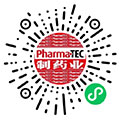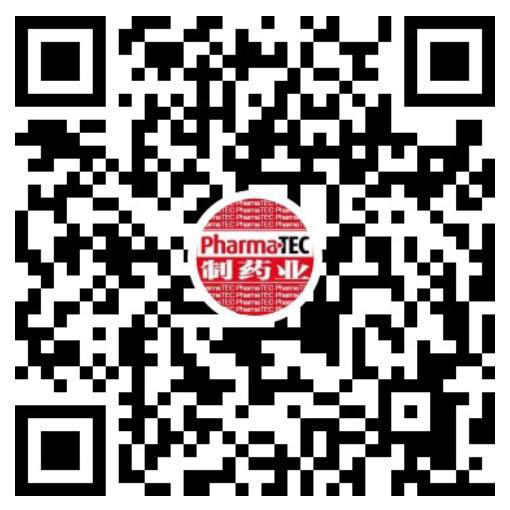原料药工艺开发的100个术语(中英文)
1.API (Active Pharmaceutical Ingredient)
活性药物成分
The key component of a drug that provides the therapeutic effect.
2.Synthesis Route (合成路线)
合成路线
The chemical pathway used to produce the API.
3.Reaction Optimization (反应优化)
反应优化
The process of improving reaction conditions to maximize yield and purity.
4.Catalyst (催化剂)
催化剂
A substance that increases the rate of a chemical reaction without being consumed.
5.Substrate (底物)
底物
The substance on which an enzyme or catalyst acts.
6.Reagent (试剂)
试剂
A substance used in a chemical reaction to detect, measure, or produce another substance.
7.Solvent (溶剂)
溶剂
A substance that dissolves other substances to form a solution.
8.Purification (纯化)
纯化
The process of removing impurities from a substance.
9.Crystallization (结晶)
结晶
The process of forming solid crystals from a solution or melt.
10.Distillation (蒸馏)
蒸馏
A separation process that involves heating a mixture to vaporize components.
11.Filtration (过滤)
过滤
The process of separating solids from liquids or gases using a filter medium.
12.Drying (干燥)
干燥
The process of removing moisture or solvent from a substance.
13.Granulation (制粒)
制粒
The process of agglomerating fine particles into larger granules.
14.Tabletting (压片)
压片
The process of compressing powder into solid tablets.
15.Capsule Filling (胶囊填充)
胶囊填充
The process of filling capsules with medication.
16.Coating (包衣)
包衣
The process of applying a protective or functional coating to tablets or capsules.
17.Sterilization (灭菌)
灭菌
The process of eliminating all microorganisms from a substance or equipment.
18.Validation (验证)
验证
The process of confirming that a process or system meets specified requirements.
19.Scale-Up (放大)
放大
The process of increasing the production scale from laboratory to industrial levels.
20.Process Analytical Technology (PAT) (过程分析技术)
过程分析技术
A set of tools and methods for analyzing and controlling manufacturing processes.
21.Quality Control (QC) (质量控制)
质量控制
The process of ensuring that products meet specified quality standards.
22.Quality Assurance (QA) (质量保证)
质量保证
The process of ensuring that a product or service meets quality requirements.
23.Good Manufacturing Practice (GMP) (良好生产规范)
良好生产规范
A system for ensuring that products are consistently produced and controlled according to quality standards.
24.Batch Record (批记录)
批记录
A document that records all steps and data related to the production of a batch of product.
25.Stability Testing (稳定性测试)
稳定性测试
The process of testing a product's stability under various conditions over time.
26.Impurity (杂质)
杂质
An unwanted substance present in a product.
27.Degradation (降解)
降解
The process of a substance breaking down into simpler compounds.
28.Formulation Development (制剂开发)
制剂开发
The process of developing a drug formulation for delivery.
29.Bioavailability (生物利用度)
生物利用度
The proportion of a drug that enters the circulation when introduced into the body.
30.Bioequivalence (生物等效性)
生物等效性
The state where two formulations of a drug are absorbed at the same rate and to the same extent.
31.Preclinical Testing (临床前测试)
临床前测试
Testing conducted before clinical trials to evaluate safety and efficacy.
32.Clinical Trials (临床试验)
临床试验
Research studies conducted to evaluate the safety and efficacy of new drugs.
33.Regulatory Affairs (法规事务)
法规事务
The process of ensuring compliance with regulatory requirements for drug development and marketing.
34.Drug Master File (DMF) (药物主文件)
药物主文件
A document submitted to regulatory agencies containing information about the manufacturing process and components of a drug.
35.Marketing Authorization (上市许可)
上市许可
Approval granted by regulatory agencies to market a drug.
36.Post-Market Surveillance (上市后监测)
上市后监测
Monitoring of a drug's safety and efficacy after it has been marketed.
37.Adverse Event (不良事件)
不良事件
An undesirable or unexpected event associated with the use of a drug.
38.Recall (召回)
召回
The process of retrieving and removing a product from the market due to safety concerns.
39.Risk Assessment (风险评估)
风险评估
The process of identifying and evaluating potential risks associated with a product or process.
40.Risk Management (风险管理)
风险管理
The process of controlling and mitigating risks associated with a product or process.
41.Change Control (变更控制)
变更控制
The process of managing changes to a product or process to ensure quality and compliance.
42.Document Control (文件控制)
文件控制
The process of managing and maintaining documents related to product development and manufacturing.
43.Training (培训)
培训
The process of educating personnel on procedures and best practices.
44.Audit (审计)
审计
The process of reviewing and evaluating a system or process for compliance and effectiveness.
45.Corrective and Preventive Action (CAPA) (纠正和预防措施)
纠正和预防措施
Actions taken to correct and prevent the recurrence of nonconformities.
46.Supplier Qualification (供应商资质)
供应商资质
The process of evaluating and approving suppliers based on quality and regulatory standards.
47.Material Safety Data Sheet (MSDS) (材料安全数据表)
材料安全数据表
A document that provides information on the properties of chemical products and their safe handling.
48.Hazard Analysis (危害分析)
危害分析
The process of identifying and evaluating potential hazards associated with a product or process.
49.Critical Quality Attribute (CQA) (关键质量属性)
关键质量属性
A physical, chemical, biological, or microbiological property of a drug that must be controlled to ensure quality.
50.Critical Process Parameter (CPP) (关键工艺参数)
关键工艺参数
A process variable that has a significant impact on the quality of a product.
51.Design Space (设计空间)
设计空间
The multidimensional combination of process parameters and input variables that have been demonstrated to provide quality assurance.
52.Process Performance Qualification (PPQ) (工艺性能确认)
工艺性能确认
The process of demonstrating that a process can consistently produce a product meeting quality standards.
53.Analytical Method Validation (分析方法验证)
分析方法验证
The process of proving that an analytical method is suitable for its intended purpose.
54.Residual Solvent (残留溶剂)
残留溶剂
Solvents remaining in a product after the manufacturing process.
55.Heavy Metals (重金属)
重金属
Metallic elements with high density that can be toxic at low concentrations.
56.Microbial Contamination (微生物污染)
微生物污染
The presence of microorganisms in a product or environment.
57.Endotoxin (内毒素)
内毒素
Toxic substances released by certain bacteria upon lysis.
58.Osmolality (渗透压)
渗透压
The concentration of solute particles in a solution that affects osmotic pressure.
59.Particle Size (粒径)
粒径
The size of particles in a powder or suspension.
60.Polymorphism (多晶型)
多晶型
The existence of a substance in different crystalline forms.
61.Hygroscopy (吸湿性)
吸湿性
The ability of a substance to absorb moisture from the air.
62.Deliquescence (潮解)
潮解
The process of a substance absorbing enough moisture to dissolve itself.
63.Caking (结块)
结块
The formation of lumps in a powder due to moisture or pressure.
64.Flowability (流动性)
流动性
The ability of a powder to flow freely.
65.Bulk Density (堆积密度)
堆积密度
The mass of a powder per unit volume in its natural state.
66.Tapped Density (振实密度)
振实密度
The mass of a powder per unit volume after tapping or vibration.
67.Hausner Ratio (豪斯纳比)
豪斯纳比
A ratio used to assess the flowability of powders.
68.Angle of Repose (休止角)
休止角
The angle of a pile of granular material.
69.Compressibility (压缩性)
压缩性
The ability of a substance to be compressed.
70.Lubrication (润滑)
润滑
The process of reducing friction between surfaces in contact.
71.Binding (粘合)
粘合
The process of binding particles together to form a solid mass.
72.Disintegration (崩解)
崩解
The process of breaking down a tablet into smaller particles.
73.Dissolution (溶出)
溶出
The process of a substance dissolving in a solvent.
74.Bioavailability Enhancement (生物利用度增强)
生物利用度增强
Techniques used to improve the absorption of a drug in the body.
75.Nanotechnology (纳米技术)
纳米技术
The manipulation of matter on an atomic or molecular scale.
76.Lipid-Based Formulations (脂质基制剂)
脂质基制剂
Drug formulations based on lipid materials to improve bioavailability.
77.Prodrug (前药)
前药
A biologically inactive compound that is metabolized into an active drug.
78.Metabolite (代谢物)
代谢物
A substance produced during metabolism.
79.Cytochrome P450 (细胞色素P450)
细胞色素P450
A group of enzymes involved in the metabolism of drugs and other substances.
80.Drug-Drug Interaction (药物相互作用)
药物相互作用
The effect of one drug on the pharmacokinetics or pharmacodynamics of another drug.
81.Pharmacokinetics (药代动力学)
药代动力学
The study of how a drug is absorbed, distributed, metabolized, and excreted by the body.
82.Pharmacodynamics (药效动力学)
药效动力学
The study of the biochemical and physiological effects of drugs.
83.Therapeutic Index (治疗指数)
治疗指数
The ratio of the toxic dose to the therapeutic dose of a drug.
84.Dose Response (剂量反应)
剂量反应
The relationship between the dose of a drug and its effect.
85.Maximum Tolerated Dose (MTD) (最大耐受剂量)
最大耐受剂量
The highest dose of a drug that does not cause unacceptable side effects.
86.Effective Dose (ED) (有效剂量)
有效剂量
The dose of a drug that produces a specific effect in a defined proportion of subjects.
87.No Observed Adverse Effect Level (NOAEL) (未观察到不良反应水平)
未观察到不良反应水平
The highest dose of a drug at which no adverse effects are observed.
88.Lowest Observed Adverse Effect Level (LOAEL) (最低观察到不良反应水平)
最低观察到不良反应水平
The lowest dose of a drug at which adverse effects are observed.
89.Safety Margin (安全范围)
安全范围
The ratio of the therapeutic dose to the toxic dose of a drug.
90.Toxicology (毒理学)
毒理学
The study of the adverse effects of chemicals on living organisms.
91.Genotoxicity (遗传毒性)
遗传毒性
The ability of a substance to damage genetic material.
92.Carcinogenicity (致癌性)
致癌性
The ability of a substance to cause cancer.
93.Mutagenicity (致突变性)
致突变性
The ability of a substance to induce mutations in genetic material.
94.Teratogenicity (致畸性)
致畸性
The ability of a substance to cause birth defects.
95.Reproductive Toxicity (生殖毒性)
生殖毒性
The ability of a substance to affect reproductive function.
96.Ecotoxicology (生态毒理学)
生态毒理学
The study of the toxic effects of chemicals on living organisms in the environment.
97.Green Chemistry (绿色化学)
绿色化学
The design of products and processes that minimize the generation of hazardous substances.
98.Sustainability (可持续性)
可持续性
The ability to meet the needs of the present without compromising the ability of future generations to meet their own needs.
99.Waste Minimization (废物最小化)
废物最小化
The process of reducing the amount of waste generated during manufacturing.
100.Energy Efficiency (能源效率)
能源效率
The ratio of energy output to energy input in a system.
有机合成与原料药开发
邵丽竹
何发
热点文章
-
几种典型制药工艺流程图分析
2025-10-11
-
阿司匹林合成工艺及装置改进
2025-10-21
-
qPCR技术:药典 2025 版下生物制品2小时无菌放行方案
2025-09-10
-
辐照辐照灭菌技术在制药行业中的应用灭菌技术在制药行业中的应用
2025-10-11
-
中药颗粒剂生产中的现代化工艺改造
2025-11-04
-
2025年50家头部药企的竞争格局与核心趋势分析
2025-10-21
-
浅谈非最终灭菌产品制剂车间无菌工艺模拟试验中的要点与设计
2025-11-18
-
基于CFD仿真技术的灌装机充氮装置设计优化
本文以某制药产线的灌装机设备为研究对象,采用计算流体动力学(CFD)仿真技术对充氮装置的充氮性能进行分析,并结合分析结果对氮幕结构进行了优化设计。随后,针对优化方案进行性能仿真验证,结果显示优化后的顶空残氧量降低至0.252%。为了进一步验证优化方案的实际效果,将优化方案应用于实际产线进行性能测试,测得的顶空残氧量为0.68%,这一结果满足了小于1%的要求,表明其充氮保护性能已达到国际先进水平。
作者:王志刚、刘依宽、刘佳鑫
-
药品密封性检测 :用户需求与优化
-
可控冻融系统在生物原液上的应用
-
人用疫苗生产数字化转型
-
药包材生产质量管理的进阶策略
-
药厂洁净区域风量和压差的控制策略













评论
加载更多